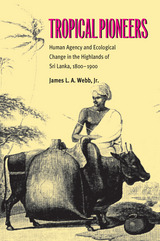

Drawing on perspectives from anthropology and social theory, this book explores the quotidian routines of debt collection in nineteenth-century capitalism. It focuses on Switzerland, an exemplary case of liberal rule. Debt collection and bankruptcy relied on received practices until they were standardized in a Swiss federal law in 1889. The vast array of these practices was summarized by the idiomatic Swiss legal term “Rechtstrieb” (literally, “law drive”). Analyzing these forms of summary justice opens a window to the makeshift economies and the contested political imaginaries of nineteenth-century everyday life. Ultimately, the book advances an empirically grounded and theoretically informed history of quotidian legal practices in the everyday economy; it is an argument for studying capitalism from the bottom up.

Although there were neither professors of morphology nor a morphologists' society, morphologists achieved influence by "colonizing" niches in a variety of disciplines. Scientists in anatomy, zoology, natural history, and physiology considered their work morphological, and the term encompassed research that today might be classified as embryology, systematics, functional morphology, comparative physiology, ecology, behavior, evolutionary theory, or histology. Nyhart draws on research notes, correspondence, and other archival material to examine how these scientists responded to new ideas and to the work of colleagues. She examines the intertwined histories of morphology and the broader biological enterprise, demonstrating that the study of form was central to investigations of such issues as the relationships between an animal's structure and function, between an organism and its environment, and between living species and their ancestors.

Jennifer Core and Janet Hasson’s study of samplers—embroideries that are “first attempts at a new technique, color combination, or unusual material”—provides vivid descriptions of this nineteenth-century Tennessee art form in its many varieties. The authors not only catalogue and describe samplers from each of Tennessee’s major regions—West, Middle, and East—but also incorporate research on the sampler makers and their families. This research provides fascinating insight into the stitchers, their teachers, and their academies.
Including a chapter on female education on the Tennessee frontier and another on embroideries and needlework focused on mourning, the volume draws on oral histories of the embroiderers’ descendants, family Bibles, diaries, scrapbooks, cemetery records, and other primary sources. Photos of the samplers are accompanied by detailed descriptions of styles, thread count, materials used, frames, and motifs. Ultimately, the study provides a snapshot of the lives of girls and young women in nineteenth-century Tennessee, including the role of this ornamental art in their education.
Providing important historical context on Tennessee education, economy, and domestic life, Core and Hasson describe how embroidery came to be a crucial primary source in revealing the lives of girls and young women during a time when little was recorded about them. This book is an authoritative record of the material culture produced in the daily routine of school rooms. It is for all who see beauty in sometimes-overlooked handiwork and understand the importance of curating, preserving, and analyzing it.

In 1800, the highlands of Sri Lanka had some of the most biologically diverse primary tropical rainforest ecosystems in the world. By 1900, only a few craggy corners and mountain caps had been spared the fire stick. Highland villagers, through the extension of slash-and-burn agriculture, and British managers, through the creation of plantations—first of coffee, then cinchona, and finally tea—had removed virtually the entire primary forest cover.
Tropical Pioneers documents the conversion of a tropical rainforest biome and the collision between what previously had been more discrete ecological zones within South Asia. The ecological impacts were transformational. Author James L. A. Webb, Jr., demonstrates that profound ecological disruption occurred in the central highlands of Sri Lanka during the nineteenth century and suggests that the theme of ecological crisis brought about by the integration of tropical ecological zones during precolonial and colonial periods alike is an important one for historians to investigate elsewhere.
Tropical Pioneers is based on extensive research in the National Archives of Sri Lanka, the National Agricultural Library at Gannaruwa, the Library of the Royal Asiatic Society-Ceylon Branch, the Royal Botanic Gardens at Kew, the Public Record Office of the United Kingdom, and the British Library.
READERS
Browse our collection.
PUBLISHERS
See BiblioVault's publisher services.
STUDENT SERVICES
Files for college accessibility offices.
UChicago Accessibility Resources
home | accessibility | search | about | contact us
BiblioVault ® 2001 - 2024
The University of Chicago Press









